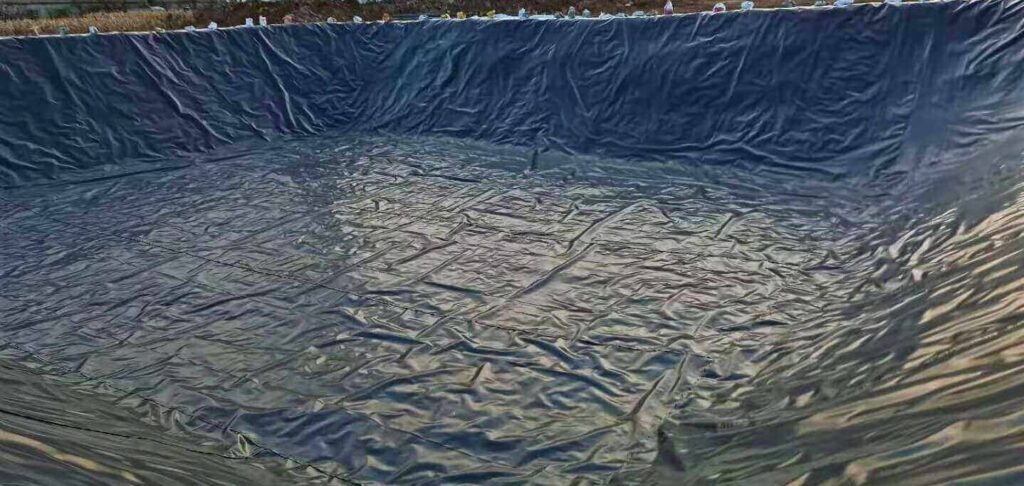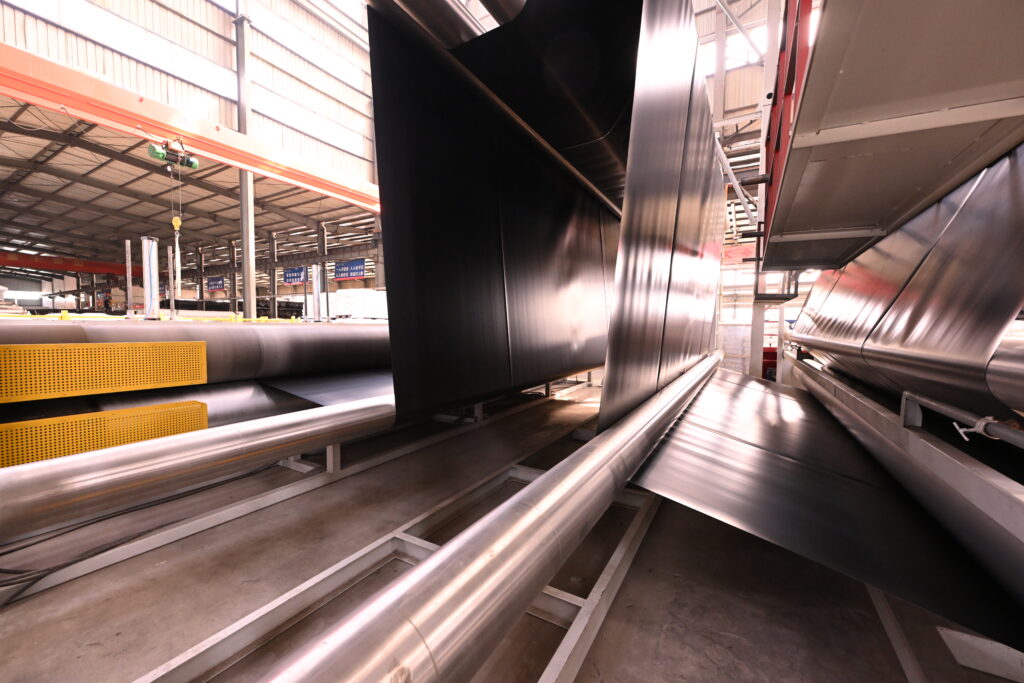How is hdpe waterproofing implemented?
HDPE (High-Density Polyethylene) waterproofing is typically implemented in construction projects following a series of steps designed to ensure proper installation and effective moisture protection. Here is a general overview of how HDPE waterproofing is implemented:
Surface Preparation: The substrate, whether it’s concrete, metal, wood, or another material, must be clean, smooth, dry, and free of any debris, dust, grease, or other contaminants. Any irregularities, cracks, or voids in the substrate should be repaired or filled as necessary to ensure a smooth and uniform surface.
Primer Application (if required): Depending on the type of substrate and waterproofing system used, a primer may be applied to enhance adhesion between the substrate and the HDPE membrane.
Membrane Installation:
HDPE waterproofing membranes are typically supplied in rolls. The rolls should be stored properly and allowed to acclimate to the ambient temperature and humidity of the installation site.
The membrane is then positioned over the prepared substrate, starting from the lowest point and working upward. It’s crucial to ensure proper alignment and overlap between adjacent membrane sheets to create a continuous barrier against water infiltration.
HDPE membranes can be mechanically attached, adhered using adhesives, or heat-welded together depending on the specific installation requirements and manufacturer recommendations.
Special attention should be paid to detailing around penetrations, corners, edges, and transitions to ensure complete coverage and watertight seals.
Seam Welding: In installations where heat-weldable HDPE membranes are used, seams between adjacent membrane sheets are typically heat-welded to create strong and waterproof joints. Proper temperature settings, welding techniques, and pressure application are critical to achieving durable and reliable seam welds.
Testing and Inspection: After the HDPE membrane installation is complete, it’s essential to conduct thorough testing and inspection to ensure the integrity of the waterproofing system. This may include flood testing, water ponding, or electronic leak detection methods to identify any leaks, defects, or areas of concern that require remediation.
Protection and Backfilling (if applicable): Depending on the project requirements, the HDPE waterproofing membrane may be protected with additional layers of protection, such as geotextiles, drainage boards, or protective coatings. If backfilling is required, it should be done carefully to avoid damaging the waterproofing system.
Maintenance and Monitoring: Regular inspection and maintenance of the HDPE waterproofing system are essential to identify and address any issues or damage that may arise over time. This includes keeping the surface clean, repairing any punctures or tears, and ensuring proper drainage and ventilation to prevent moisture buildup.
By following these steps and adhering to industry best practices, HDPE waterproofing can provide reliable and long-lasting moisture protection for various construction applications.
What is the service life of hdpe waterproofing?
The service life of HDPE (High-Density Polyethylene) waterproofing can vary depending on several factors, including the quality of the material, installation techniques, environmental conditions, and the type of structure being protected. However, properly installed HDPE waterproofing systems can typically have a service life ranging from 20 to 50 years or more.
Several factors influence the longevity of HDPE waterproofing:
Material Quality: The quality of the HDPE membrane itself plays a crucial role in determining its service life. Higher-quality materials with superior resistance to UV radiation, chemical exposure, and mechanical stresses tend to offer longer-lasting performance.
Installation Quality: Proper installation is essential for maximizing the service life of HDPE waterproofing. Ensuring thorough surface preparation, correct seam welding, proper detailing around penetrations, and adequate slope for drainage are all critical factors that can impact the longevity of the waterproofing system.
Environmental Conditions: Environmental factors such as temperature fluctuations, exposure to UV radiation, chemical exposure, and soil conditions can affect the performance and durability of HDPE waterproofing. In harsh climates or environments with high levels of UV exposure or chemical pollutants, the service life of the membrane may be shorter.
Maintenance: Regular inspection and maintenance can help extend the service life of HDPE waterproofing systems. Prompt detection and repair of any damage or deterioration, as well as ensuring proper drainage and ventilation, can help prevent premature failure of the waterproofing system.
Structural Movement: Structural movement due to settling, seismic activity, or thermal expansion and contraction can put stress on the waterproofing membrane over time. Proper design considerations to accommodate structural movement and flexibility in the waterproofing system can help mitigate potential issues and prolong its service life.
Overall, while HDPE waterproofing systems are known for their durability and longevity, the actual service life can vary based on these factors. Regular maintenance, adherence to best practices during installation, and choosing high-quality materials are all important considerations for maximizing the lifespan of HDPE waterproofing.
How is the effect of HDPE waterproofing?
HDPE (High-Density Polyethylene) waterproofing is a widely used method for providing effective moisture protection in various construction applications, including roofing, basements, tunnels, and ponds. The effectiveness of HDPE waterproofing primarily stems from its material properties and installation method:
Impermeability: HDPE is inherently impermeable to water and moisture due to its dense molecular structure. It effectively forms a barrier against water infiltration, preventing moisture from penetrating into the protected structure.
Durability: HDPE is highly durable and resistant to environmental factors such as UV radiation, chemical exposure, and temperature fluctuations. These properties make it suitable for long-term waterproofing applications without significant degradation.
Flexibility: HDPE membranes are flexible and can conform to the contours and irregularities of the substrate, ensuring seamless coverage and reducing the risk of water leakage through gaps or cracks.
Ease of Installation: HDPE waterproofing membranes are typically available in rolls, which simplifies the installation process. They can be easily cut, manipulated, and welded together to form a continuous barrier, minimizing the potential for water seepage.
Cost-Effectiveness: While HDPE waterproofing may require a higher initial investment compared to some other waterproofing methods, its long-term durability and low maintenance requirements contribute to its cost-effectiveness over the lifespan of the structure.
Environmental Considerations: HDPE is a recyclable material, which aligns with sustainability goals in construction projects. Additionally, its longevity reduces the need for frequent replacements, further reducing environmental impact.
However, it’s important to note that the effectiveness of HDPE waterproofing relies heavily on proper installation techniques, including surface preparation, seam welding, and detailing around penetrations and transitions. Improper installation can compromise the integrity of the waterproofing system and lead to water intrusion issues.
In summary, HDPE waterproofing is an effective and durable solution for protecting structures against water damage when installed correctly. Its impermeability, durability, flexibility, ease of installation, and environmental benefits make it a popular choice in various construction applications.
Author
-

Founded in 2002, Tinhy's team focuses on the manufacturing, marketing, installation, application and research and development of geosynthetic materials.
View all posts


